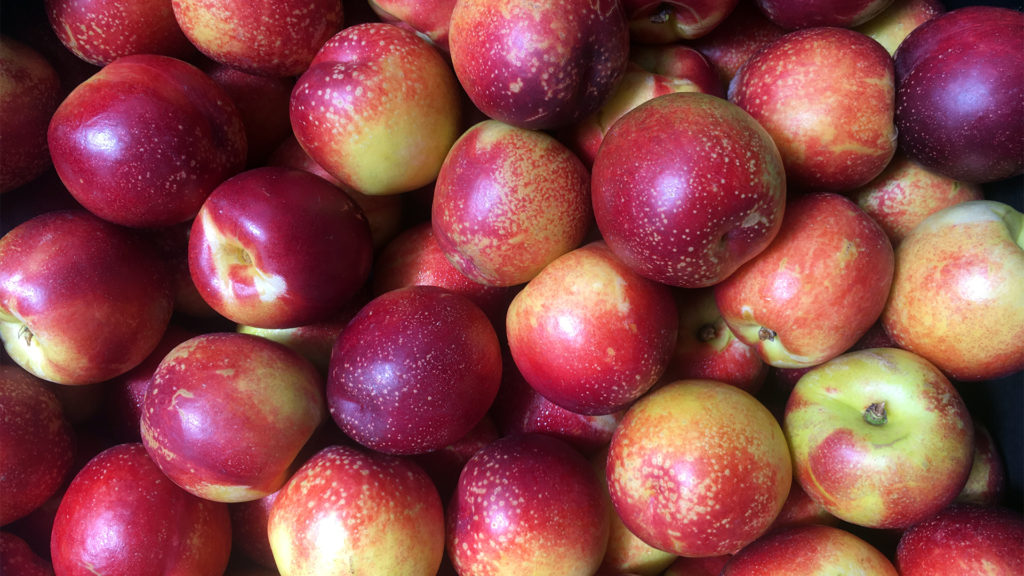When is a peach not a peach? When it is a nectarine. While the similarities between peaches and nectarines are obvious, few people realize that they actually belong to the same species. In fact, the flower and leaf of peach and nectarine trees are indistinguishable, and it is not uncommon for the branch of a peach tree to have nectarines growing on it, and vice versa.
The first nectarine was a genetic mutation of a peach, the only difference between the two being that the nectarine lacks the gene that makes peaches fuzzy. This was a fortuitous development for those who have an aversion to peach fuzz, for the nectarine has a smooth tender skin that fuzz haters can eat without peeling the fruit.
While both peaches and nectarines have their own peculiar charms, between the two, I am partial toward nectarines. In Juneau, the nectarines you buy at the store are more reliably flavorful than peaches, which can sometimes be bland and mealy after being shipped so far to get here.
Nectarines, especially ones that have been ripened properly, are incredibly sweet and juicy while at the same time having enough counterbalancing tartness to make their flavor interesting instead of merely sweet.
When choosing nectarines, look for good-sized fruit that yields slightly to your touch. Hard nectarines should be avoided, because they will never ripen properly. Likewise, avoid fruit that has any green in the background color of the skin.
Because nectarines are one of the produce items on the Environmental Working Group’s “Dirty Dozen” list of fruits and vegetables, I recommend you buy organic in order to avoid exposure to potentially harmful chemicals.
The best way to ripen nectarines is to keep them at room temperature in a paper bag until they give to gentle pressure along the seam. Do not store nectarines in plastic bags and don’t put them in the sun, they won’t ripen properly. Once ripe, they should be used immediately, or refrigerated for use within a few days.
The season for nectarines runs from June to September, and July is the month when they are at their peak. There are many varieties of nectarines, some with white colored flesh, and others with flesh that is more yellow or orange. White fleshed varieties tend to be sweeter and more delicately flavored, while yellow fleshed varieties will have more tartness and depth of flavor.
While nectarines are probably most delicious eaten out of hand or as part of a fruit salad, they also lend themselves admirably to cooking in pies, cobblers, and crisps. They also make flavorful jams and chutneys, which is a great way to use slightly overripe fruit. Here is a recipe for a nectarine chutney that is delicious with grilled chicken.
Nectarine Chutney
1 lb firm-ripe nectarines, cut into 1-inch pieces
1 large tomato, coarsely chopped
1 small garlic clove, chopped
1/4 cup cider vinegar
3 tablespoons packed light brown sugar or Sucanat
1 teaspoon curry powder (preferably Madras)
1/4 teaspoon saltSimmer nectarines, tomato, garlic, vinegar, brown sugar, curry powder, and salt, uncovered, in a 2-quart heavy saucepan, stirring occasionally, until slightly thickened but still saucy, about 20 minutes.


